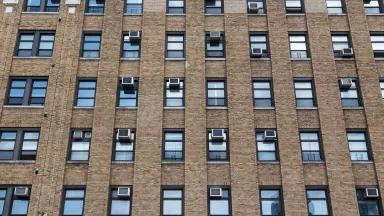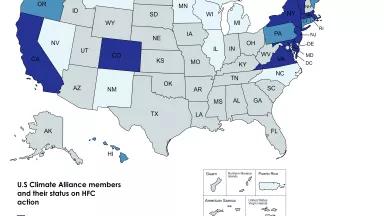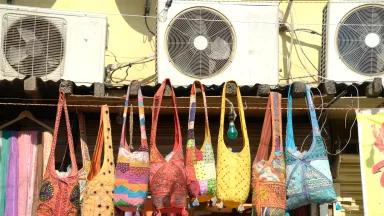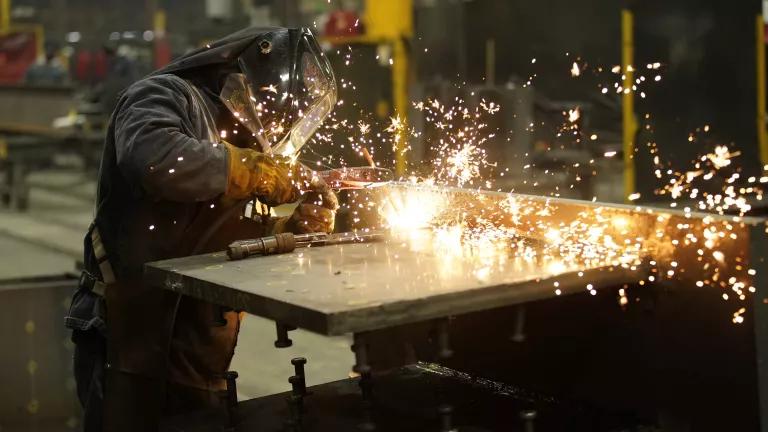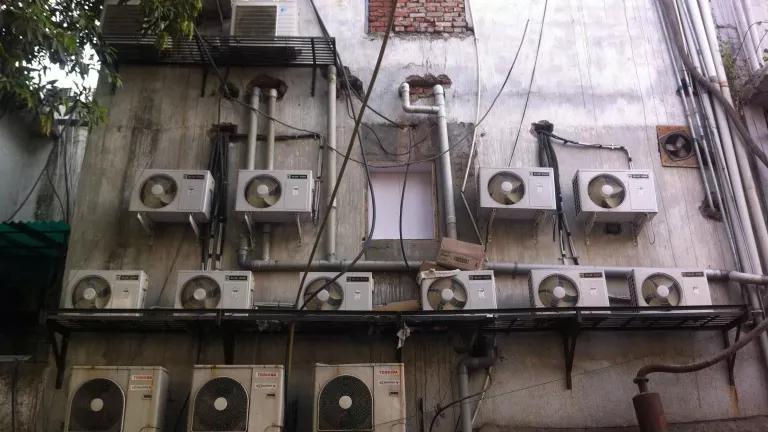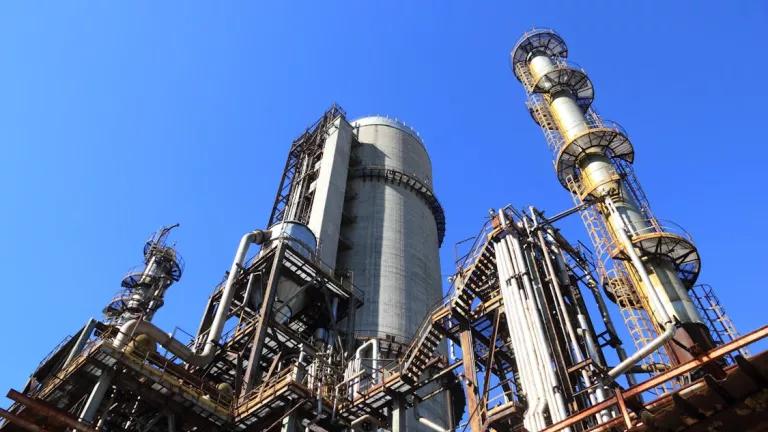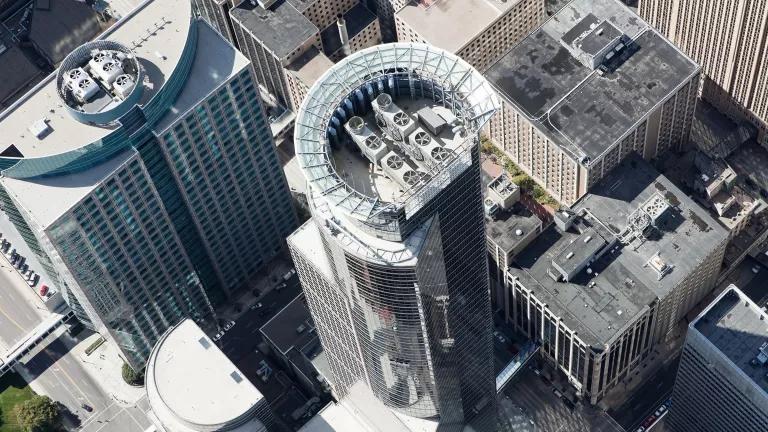
Since the 1970s, NRDC has been at the forefront of the fight to eliminate climate-polluting, ozone-depleting substances—often found in refrigerators and air conditioners—and replace them with climate-friendly alternatives.
Montreal Protocol
In the 1970s and ’80s, we led efforts to ban harmful chlorofluorocarbons (CFCs) and to enact the Montreal Protocol on Substances That Deplete the Ozone Layer. In 1986, we made the first proposal for a global CFC phaseout, leading to one of the world’s greatest environmental achievements. The CFC phaseout benefited both the ozone layer and the climate since the replacement chemicals did not deplete the ozone and had a significantly lower warming potential.
Due to these efforts, CFCs were gradually replaced by hydrofluorocarbons (HFCs). While HFCs don’t destroy the ozone layer, these super-pollutants still have hundreds to thousands of times the heat-trapping power of carbon dioxide. They are also the fastest-growing climate pollutant and their unchecked growth could add up to 0.5 degrees Celsius to global temperatures by century’s end.
More than a decade ago, NRDC and partners proposed using the Montreal Protocol again to phase down HFCs and built support in key countries, especially the United States, India, and China. On October 15, 2016, that work paid off when more than 150 countries signed the landmark Kigali Amendment (named after the Rwandan capital where it was adopted).
This agreement will phase down the production and consumption of HFCs and replace them with alternative chemicals and products that use less energy and produce less pollution.
We estimate that the reduction of HFC use due to the Kigali Amendment will be equal to more than 70 billion tons of carbon dioxide over the next 35 years. That’s equal to knocking out the entire planet’s carbon emissions for more than two years.
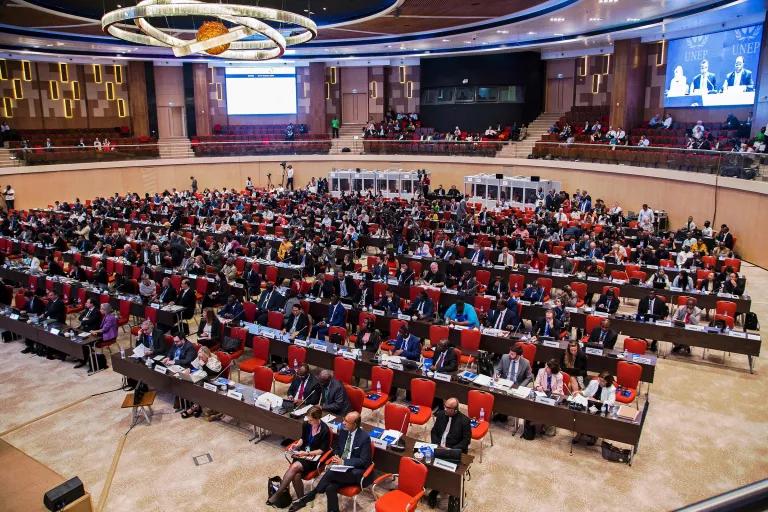
The 28th meeting of the Parties to the Montreal Protocol in Kigali on October 13, 2016
Cyril Ndegeya/AFP via Getty Images
India
India’s massive need for sustainable cooling makes it a key part of our global work to phase down HFCs. Rising temperatures, increasing consumer power, and rapid urbanization are driving rapid growth in purchases of cooling appliances that traditionally use HFCs—leading to huge projected HFC and energy demand growth over the next 30 years.
India has a long record of leadership under the Montreal Protocol, from their indispensable role in the negotiations that formed the Montreal Protocol in 1987 to, in 2016, forging a path forward on the Kigali Amendment. Since then, the Indian government has been an outspoken champion of enhancing energy efficiency in cooling, alongside the HFC phasedown. In 2019, India’s Ministry of Environment, Forest, and Climate Change published a first-of-its-kind guiding document called the India Cooling Action Plan, which set several ambitious targets, including reducing refrigerant and cooling demand by about one-quarter in 2038.
Indian industry champions have also led the world, leapfrogging over HFCs as they phase out ozone-depleting substances. Today, nearly one-third of the room air conditioner sector, for example, is estimated to use climate-friendlier alternatives to HFCs, including refrigerants R32 and R290. The insulating foam industry has also succeeded in almost entirely avoiding use of HFCs.
NRDC partners with the government, civil society, and industry champions to further propel these market trends, while keeping in mind the other parts of the cooling puzzle. We also work to increase air conditioner efficiency and reduce the demand for cooling through cool roofs and green buildings for all. We are connecting vulnerable communities with cooling solutions and climate resilience through heat action plans and cool-roofs programs—efforts that were recognized with an Ashden Award.
United States
A groundbreaking new law will cut the United States’ production and use of HFCs by 85 percent over the next 15 years, marking one of the biggest actions that Congress has taken to meet the climate crisis. NRDC worked tirelessly with Congress and industry stakeholders to establish the HFC phasedown, in line with the requirements of the Kigali Amendment, through legislation known as the American Innovation and Manufacturing (AIM) Act.
Federal action on HFCs was made possible in no small part because of the stellar leadership of states—especially in contrast to the four years of climate inaction and regulatory rollbacks during the Trump administration. Coordinating with the U.S. Climate Alliance, a bipartisan coalition of governors committed to climate action, we successfully supported the enactment of regulations and legislation in eight states and continue to support efforts in the states that are on track to establish HFC measures in the next one to two years.
This was no small feat in a sector that has not been traditionally regulated at the state level. We’ve engaged at all stages of the process, from inception to enactment of rules that reduce HFC use in refrigeration, insulating foams, and aerosol products. States continue to drive down HFC emissions and keep industry on track to transition toward climate-friendlier alternatives.
Progress is good, but we’re far from done. Now we will forge full steam ahead to ensure the timely, transparent, and ambitious implementation of the HFC phasedown in the United States and leverage that momentum to push for more global action.




